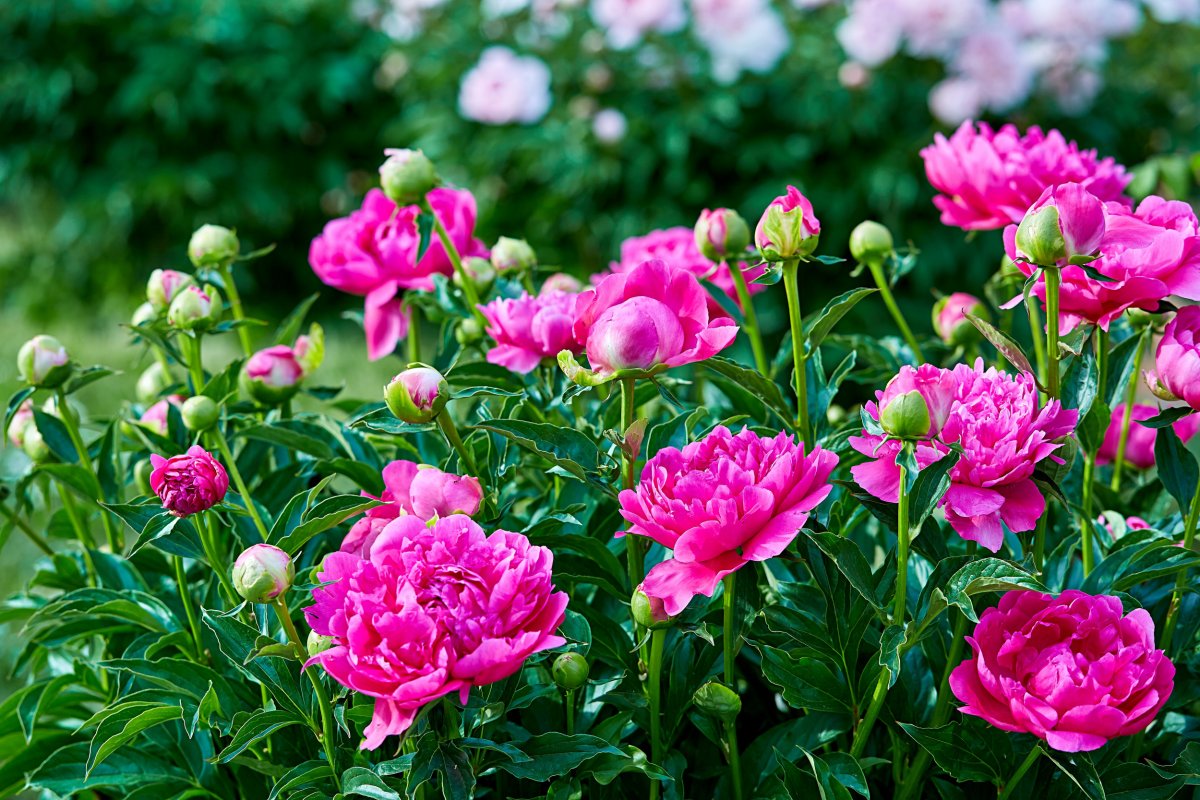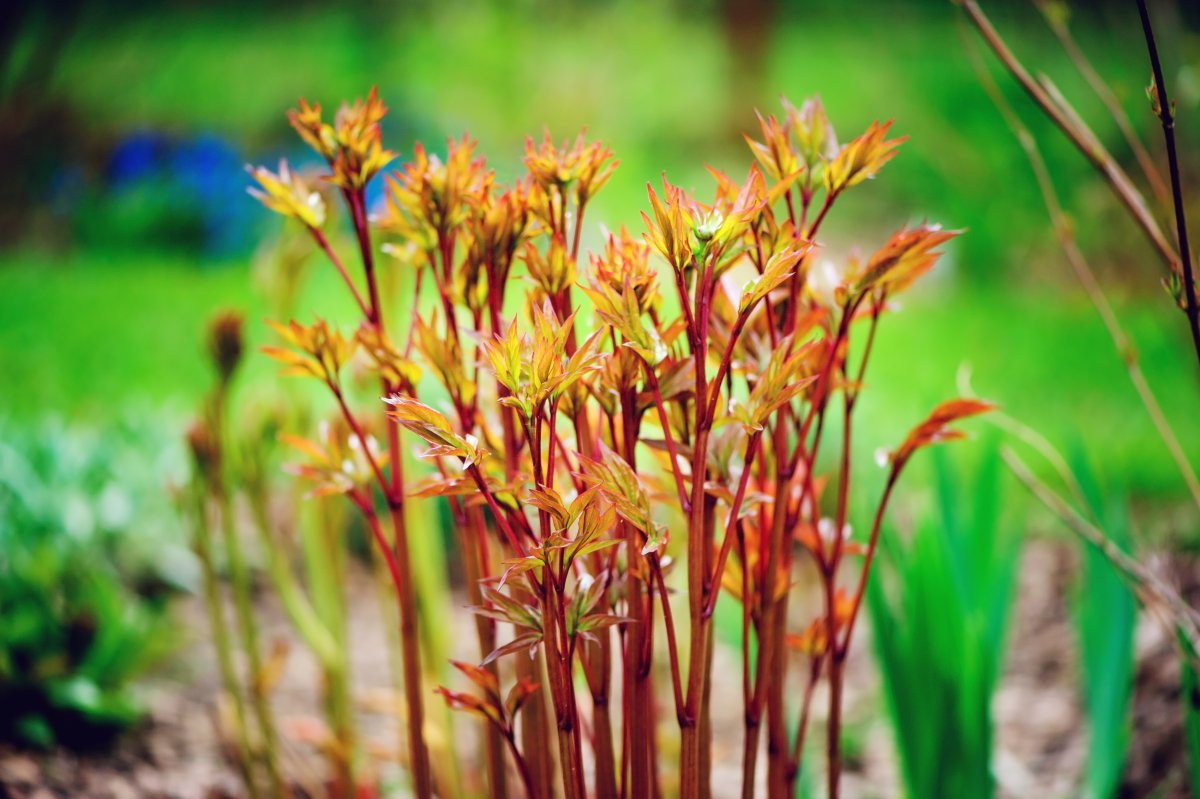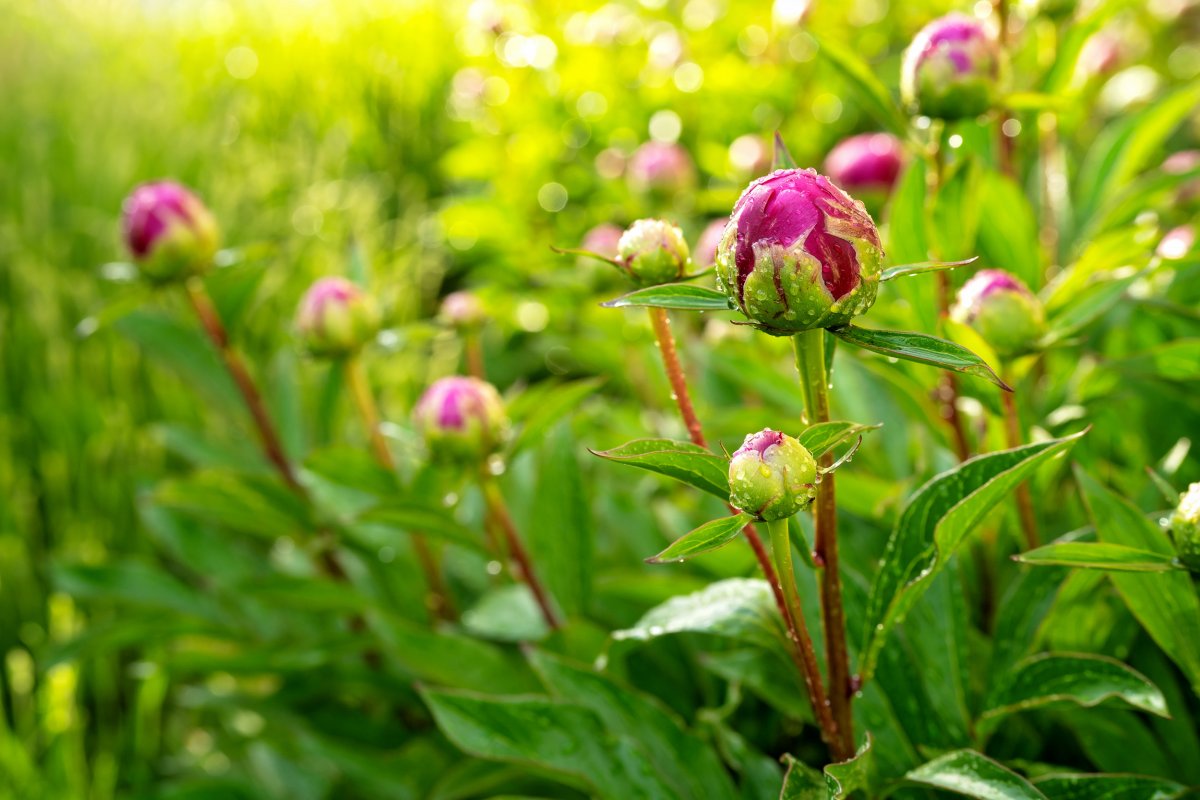Peonies are colorful flowering plants that can be a great addition to your garden. They are easy to grow, with not much upkeep required to thrive.
These hardy perennial plants can survive severe winters and some can potentially outlive humans.
Speaking to Newsweek, author and house plant expert Lisa Eldred Steinkopf said peonies are "a long-lived plant," often growing for 100 years or more.
In the U.S., most peonies are grown in states north of South Carolina and Texas. Some varieties can grow farther south but they rarely bloom because winter temperatures are not low enough for flower buds to develop properly, the U.S. Department of Agriculture (USDA) explains.
There are several varieties of peonies but the two that are typically grown are garden (herbaceous) peonies and tree peonies.
Found in many home gardens, the common garden peony is available in a variety of flower forms.
There are five types of garden peonies, differing by the shape of their petals. They include single, semi-double, double, Japanese and anemone.
Tree peonies can grow to eye level height on woody stems with few branches. They are maintained year-round and the buds for the following year's growth are located on the stems.

When to Plant Peonies
The best time for planting peonies is in the fall, as this ensures the roots will establish themselves before the winter.
Eldred Steinkopf explained if the peonies are container grown and were bought at a local garden center, they can be planted anytime in the spring or summer.
However, "if you are buying them bare root or moving your own plants, do it in the fall. Try to plan accordingly when planting your peony. They hate to be moved after being established," Eldred Steinkopf told Newsweek.
Peonies should be settled into place around six weeks before the ground freezes. In most of the U.S., they are planted in September and October but they can be planted later in autumn, depending on the area, says The Old Farmer's Almanac.
Planting peonies any time from late August to October is acceptable in most zones where they are grown, according to the nonprofit American Peony Society.
Peonies grow from underground stems (known as tubers) that store food produced by the leaves and new growth develops from buds or eyes on the tubers, the USDA explains.
Tubers are sold at venues in late summer and fall and some places sell fully grown peonies in the spring. But these are expensive and few survive the dry weather of summer. So it is better to buy and plant tubers in the autumn, the federal body says.
A tuber can have many eyes but they must have at least three to five in order to thrive. Peonies planted from tubers with three to five eyes may flower well the second year after planting.
One planted from tubers with less than three eyes can take around three to five years to produce more than a few small blooms, according to the USDA.

While it may be possible to plant peonies in spring, these tend not to do as well. Experts say they generally fall about a year behind those that are planted in the autumn.
The USDA says you can plant fully grown peonies in the spring but they're a lot harder to keep alive than tubers planted in the fall, since they're already growing when you plant them.
How to Care for Peonies
Below are some key basic elements to think about when looking after peonies.
Soil
Peonies should be planted in nice rich, well-drained soil. If the peony is in a container, be sure not to plant it any deeper than it is in the pot, Eldred Steinkopf advised.
"The eyes of the peony need to be at a certain level for the plant to bloom. If you buy bare root plants, make sure those eyes or just two inches below the surface," she said.
Peonies will survive in any good garden soil but they thrive in deep, fertile clay loam (which are mixtures of clay, sand and silt), says the USDA.
They prefer soil with a pH of neutral to slightly alkaline and require good drainage, growing best in slightly raised beds.
The soil should be prepped around two to four weeks before planting time, so that it can settle thoroughly by the time you plant the peonies. Peonies will not grow well in poorly prepared soil.
You can prepare the soil by digging into it around two feet deep and adding any amendments (such as enzymes, vitamins or other substances that aim to improve its growth and germination) throughout the growing area, explains the American Peony Society.

Light
Apart from a few woodland species of peonies that require filtered sunlight and can be planted in shady spots, almost all peonies require at least a half day of sunlight. Many do best with full sun exposure, notes the American Peony Society.
Eldred Steinkopf says peonies should be planted in full sun to light shade conditions, with more sun resulting in more flowers, while less sun will produce fewer flowers.
The USDA says peonies can grow in areas that are shaded for around two or three hours per day. But they won't produce large flowers when they are grown beneath trees or shrubs, as the roots of these plants will take up the water that the peonies need.
Air
Good air circulation is crucial for preventing diseases in peonies but they should also be planted where they will be protected from strong winds, the USDA says.
Extra space should also be given around these plants to help evaporate any water from their leaves and stems.

Water
Peonies do not need much water throughout the year but should be given an even moisture to get the best results. Spring and fall are when they require the most moisture to facilitate vegetative growth in the spring and root systems in the autumn.
Peonies need frequent watering in their first season to establish their roots in the soil. But after then, normal rainfall typically provides enough water except during long dry spells.
During dry weather, peonies should be watered often just enough to keep the soil slightly damp, but not wet and the soil should be left to dry between waterings.

Pruning
Flowers should be cut as soon as they start to fade so that seeds will not develop, as the seeds will use up much-needed plant food. But all foliage should be left on the stems as green foliage is required for flowering the following year.
The American Peony Society explains: "Removal of spent peony blooms does not harm the plant and may produce a tidier looking planting. Simply cut them off, leaving behind the leaves, which are needed through the growing season for photosynthesis."
But any diseased foliage and stems seen on the peonies throughout the growing season should be removed, the non-profit advises.

Uncommon Knowledge
Newsweek is committed to challenging conventional wisdom and finding connections in the search for common ground.
Newsweek is committed to challenging conventional wisdom and finding connections in the search for common ground.
About the writer
Soo Kim is a Newsweek reporter based in London, U.K. She covers various lifestyle stories, specializing in travel and health.
Soo ... Read more
To read how Newsweek uses AI as a newsroom tool, Click here.








